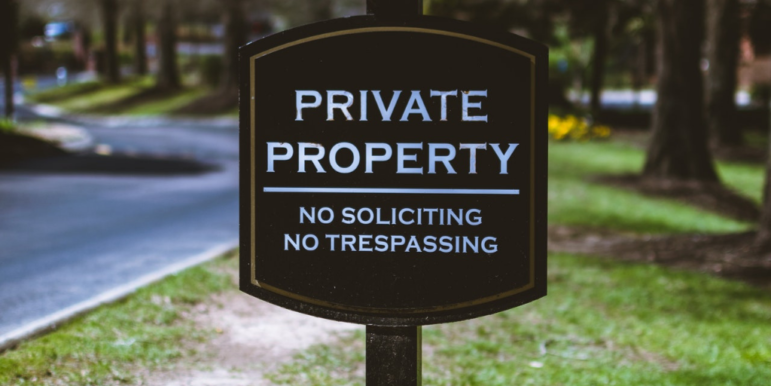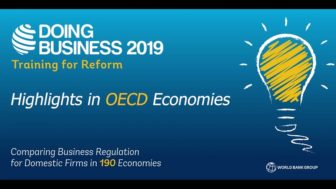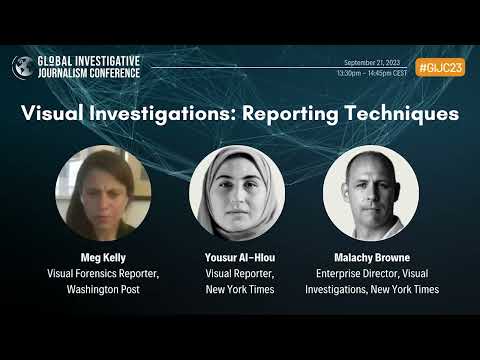

Land Ownership Records: So Useful, but Challenging to Find
Finding out who owns land can be tough. While property registration systems exist in almost all countries, the quality and availability of the information vary widely.
World Bank experts estimate that only 30% of the world’s population has a legally registered title to their land, a widely quoted figure that Bank officials stress is a rough estimate.
What’s more, property records are often incomplete or inaccurate.
“Fewer than half of the world’s countries (and just 13% in Africa) have registered or mapped the private land in their capital city, let alone beyond its borders, and public land is often not registered at all,” summarized World Bank land expert Klaus Deininger in a 2018 blog post. The lack of security of records means that multiple owners may be listed for the same parcel, another World Bank official said.
Nevertheless, in many developed countries, including the United States, the United Kingdom and Hong Kong, valuable information can be obtained from public land registries. The records frequently are locally maintained, not available in a central national registry and may not be online. Fewer than a third of countries maintain records digitally, according to Deininger.
A further complication is that privacy rules often prevent disclosure of the names of property owners. This occurs in both developing and developed countries.
GIJN will get you as close as possible to finding available land records. Below are links and descriptions for international, regional and national resources.
What Can You Do with the Information?
Real estate is an attractive and widely-used vehicle for money laundering and corruption, and discovering ownership has played a part in investigative stories. Property records have been used to:
- Expose politicians’ wealth
- Reveal money laundering
- Find out who’s committing environmental crimes
- Show the exploitation of indigenous peoples
- Track corporate corruption
- Identify those responsible for unsafe or illegal buildings
- Explain patterns of discrimination
GIJN has collected several dozen investigative stories based on land records. See these great examples.
The lack of good records about land ownership is a story in itself that needs more attention. Here are resources to help report such stories at the national level.
Investigating land deals was the subject of a panel at the GIJN 2019 Hamburg conference. Tom Johnson of the Gecko Project provided an idea-filled tipsheet. (Also in Indonesian.)
A report from The Sentry in July 2020 says that “African kleptocrats, especially those in war-torn countries, have increasingly favored real estate in African cities as a means for laundering the proceeds of corruption.”
What to Look for
Hunting for land records requires an understanding of the underlying national legal system:
- What laws exist about property rights, and what must be recorded?
- Where is property boundary information kept?
- When a property is sold, how is that handled?
- How is property assessed and taxed?
Such basic knowledge is key to finding property records. Potential sources are local officials, real estate brokers and lawyers. Also see other resources listed below.
Local knowledge is essential because there’s a lot of variety worldwide in property law and administration. One expert with US and European experience strongly advised finding a local expert to assist in understanding the records.
In many places, “titles” on land are the official records on ownership, kept in land “registers.” The boundaries and location of land is described in “cadaster” records. These records systems may be combined or separate. Records on land value, taxes and land use and information on buildings often exist in different places.
There’s substantial variation in how land ownership records are handled.
In some places, long-term leases are prevalent. So in Nigeria or Belarus, for example, certificates of occupancy confer the right to occupy the land for a defined period of time. In Vietnam, there is no private ownership, but instead there are “land-use right certificates.” In Japan, land and buildings are treated as separate and distinct.
In Brazil, only property rights data for rural lands are available in the centralized national land registry and cadaster, while the states and municipalities administer urban properties.
In the United States, land ownership is recorded and held at the local level, typically at a county recorder’s office or tax assessor’s office.
And in many places, especially in sub-Saharan Africa, only a small percentage of the land is registered or titled. Much land, mainly rural, is collectively held based on customary tenure arrangements. Controversy has often developed around competing claims for such lands and corporate and government efforts to gain control over them. To get an idea of the extent of land with customary tenure arrangements, see a map by the NGO Landmark.
So local knowledge is key.
What You Might Find
Despite all the variations and complications, property records can be rich sources.
Potential finds include:
- The name of the owner
- The address and parcel number
- A geographic description of the property boundaries
- A description of buildings and features on the property
- The price last paid for the property
- Records of previous sales
- The tax assessments now and in the past
- The allowable uses and restrictions for the property
- Details on the owner’s rights and restrictions to the land
- Liens placed on the property by a court
- Legal disputes about the property
- Records related to construction on the property, such as building permits
- Mortgage loans that encumber a property
- Servitudes, encumbrances, public right restrictions
For a good overview, visit the Cadasta Foundation website.
What May Be Hard to Find
In many countries, privacy laws restrict access to the name of the landowner. While inimical to transparency, such confidentiality also is viewed by some landowners as a protection against the powerful.
Confidentiality exists not only in many African and Asian countries, but also in some European countries, such as Germany, Belgium and Spain. By contrast, the Netherlands and Estonia are among the countries with transparency and online systems.
Even when land ownership information is available, financial and access barriers may exist. Some countries (Jamaica, the United Kingdom) charge not insignificant fees for the information. In the Democratic Republic of the Congo, inquiries have to be made in person, a possibly risky assignment.
In addition, registries can be vulnerable to corruption or misrepresentation, so the accuracy and quality of the information may be suspect. The real ownership may be disguised, perhaps with the name of a relative or a shell corporation. This leads to a further challenge: who owns the company? It can be a game of dissimulation and obfuscation.
In very few countries are real estate agents required to report suspicious behavior. A February 2019 publication by the European Parliamentary Research Service, Understanding money laundering through real estate transactions, provides a good overview, while noting that “reporting of suspicious transactions in real estate is limited, leaving ample room for improvement.”
Where to Look
Experts laughed at the idea that there might be a central international list of where to find national land records.
There isn’t.
But GIJN has identified some excellent starting points. Property records are inherently national, so local research is the best way to go. But where to look? Below you will find information about official national sources. We’ve divided these resources by region, so you may want to scroll to your area of interest.
Below the regional information we list some useful “international sources.” One of these, the World Bank Doing Business Report, contains comprehensive information about national registries and the laws and regulations governing property in 190 countries. We clue you in on how to navigate to the good stuff.
The other international sources listed are less comprehensive, but provide background on the legal frameworks and land use regimes in particular countries.
European Sources
The European e-Justice Portal: This database by the European Commission links to subpages that describe national land registries, which vary in quality, and links to them.
Eurographics: There is lots of information on the “members” page of the non-profit association representing European National Mapping, Cadastre and Land Registry Authorities. (It also publishes EuroGlobalMap using open data from official national sources.)
European Land Registry Association: A 2018 survey of government members about national systems is in Land Registries & Cadastres in Europe, but it lacks online links. A list of member contacts brings up the national regulatory authority on land issues.
United Nations Economic Commission for Europe: This UN agency works in many areas, including housing and land. Several of its reports are relevant if slightly dated.
One is from 2014, the other from 2005, correspondingly: Survey on Land Administration Systems and Inventory of Land Administration Systems in Europe and North America. Dig into the annex of the 2014 report for extraordinary detail about the records systems in the 25 countries that participated in the study: Armenia, Austria, Belarus, Belgium, Bulgaria, Croatia, Cyprus, Denmark, Estonia, Finland, Georgia, Germany, Ireland, Israel, Italy, Kyrgyzstan, Latvia, Lithuania, Malta, Netherlands, Romania, Serbia, Spain, Sweden and the United Kingdom (England and Wales).
For Russia, visit Unified State Real Estate Register (in English) for official records about land ownership and real estate listings, including different services such as state cadastral valuation. A good cadastral extract, including the names of property owners, can be obtained by registering on the Rosreestr website, but it is not available for foreigners. Also see the World Bank’s Doing Business Report and the Global Open Data Index described in the international section.
n-vestigate metabase (Russian) is a database of databases, including cadastral data, for Eastern Europe and EU countries. Narrow the field by selecting the “land disposal and ownership” sector, which shows 33 links for 26 countries.
Public Services on the Map (PDOK) is a free platform opening up the geodata sets maintained by Dutch authorities.
North America
In the United States, land records are held in more than 3,100 jurisdictions and are public.
Records such as deeds and titles are mainly held at the county and municipal levels, with titles such as the recorder’s office or the registrar of deeds. Tax assessor offices hold records on properties assessed for taxes. Many records are online (in 1,400 jurisdictions by one estimate) though search capabilities vary. You may have to register. Usually, searches by name, address or parcel number are provided. Sometimes maps are provided. Some places may not allow owner name searches.
Here are a few commercial sites that can tell you where official property records are held: NetrOnline, OnlineSearches, Trulia and SearchSystems.net (all commercial providers who sell search services).
Using a commercial vendor to research land records may be a good investment for an investigator, especially one without a clear idea of the locality involved. LexisNexis provides access to 5.6 billion personal property records, including deed, mortgage and tax assessor records. Other services include: US Title Records, ProtitleUSA and Renomy (for commercial records).
Services aimed at selling properties also provide good information, usually based on official records, and for free. Check out sites such as: Zillow, Trulia or Realtor.com. See Loopnet.com for commercial properties.
In Canada, real estate records are maintained at the provincial level and all 10 provinces have online systems. Here are the links: British Columbia, Alberta, Saskatchewan, Manitoba, Ontario, New Brunswick, Nova Scotia, Quebec, Prince Edward Island and Newfoundland. Registration and fees, some fairly steep, are usually involved. There are plenty of commercial services happy to get the information for you, too. These include Title Searchers, EasyPPSA and SpeedySearch. Some of the provinces provide lists of expert regional researchers.
Africa
New America List of Cadaster and Land Tenure Agencies: This unique list shared with GIJN was prepared in 2018 by New America, a US think tank. It includes names and addresses of relevant agencies in 50 African nations. Among other things, New America runs a program called Future of Property Rights.
Sources of Land Information in South Africa and their Institutional Context is a 2020 report by the Council for Scientific and Industrial Research (CSIR) in South Africa and the Land Portal Foundation, that was followed by a companion report, State of Land Information in South Africa.
Focus on Land in Africa: The website of this NGO includes background information on 16 African countries, such as on their national land laws.
Africa Check did summary reports on land laws and records in Nigeria and Senegal (in French).
Trimble’s Land Administration Solutions offers maps of mining and other concessions for 15 African countries.
The government of the Democratic Republic of Congo posted all of its forestry concessions online, according to an article by the Thomson Reuters Foundation. It continued: “The Republic of Congo, like Cameroon, publishes some contracts in hard copy in its journal officiel, though not systematically. Further afield, Liberia also publishes its forestry contracts, and Sierra Leone has committed to disclosing the majority of its agricultural contracts.”
Also see the World Bank’s Doing Business Report and the Global Open Data Index described in the international section.
Asia/Pacific
India has a national portal with links to online state registries. Every state has its own system to maintain land records/registration information. But the digitization of land records is incomplete, necessitating hard copy research. Here’s a background report on the land registration process.
Land Conflict Watch maps land-related conflicts in India, providing a macro picture and details of each conflict.
Follow the permits: How to identify corruption red flags in Indonesian land deals, by the Gecko Project and Mongabay is a 2019 description of techniques to obtain corporate ownership information and permits to use land. While focused on Indonesia, the methodology has wider application.
China’s land records are public in theory, but actually only available to owners and authorized persons. Private ownership of land is not permitted in China, but a private party is entitled to obtain the right to use the land. Examining the Shanghai system, the World Bank reported the URL for an online registry but commented that access is limited to “only intermediaries and interested parties.”
A similar restriction applies to accessing registry and map information in Jakarta, Indonesia. See the entry from the World Bank Doing Business Report.
By contrast, the Hong Kong registry is quite accessible.
For Singapore, visit this official website.
A July 2018 New America report described the value of digitizing land records in Punjab province in Pakistan. The report recounts the reforms made, including making records available online.
The land practices of most Asian countries are detailed in the World Bank’s Doing Business Report. Also see Global Open Data Index.
For Australia, see provincial sites listed here.
Latin America
Mexico’s records are maintained by the Registro Público de la Propiedad Federal.
Brazil has no national registry. At the state and municipal level any party can request records, and it is possible to obtain electronic, non-certified transcripts of records from many real estate registry offices. See the description of the São Paulo system in this World Bank report.
Colombia: Obtain ownership history and no-lien certificate (“certificado de tradición y libertad”) at the Superintendencia de Notariado y Registro. Any person can request the issuance of this certificate (for a fee) through the website of the Superintendencia de Notariado y Registro which contains legal information on properties across the country.
Argentina: See the Registro de la Propiedad Inmueble
El Salvador, Guatemala, Honduras, Panama and Nicaragua: For detailed information on registries in these five countries, see this 2007 report by the Food and Agriculture Organization.
For detailed information on the land practices in most Latin American countries see the World Bank Doing Business Report and other international resources above. The World Bank report often links to the national websites and describes what is retrievable. Also see Global Open Data Index.
International Sources
 The World Bank ‘s Doing Business Report: Buried in this massive evaluation about impediments to doing business in 190 countries is extensive information on land records. You will find the agency responsible and a website in many cases. Here’s a path: Click “Rankings,” then select a country, then visit the Registering Property section. Ignore the macro-conclusions and select a country. Near the bottom of each country page are two “Details” sections. One is called “Details … Procedure Time and Cost” and the other “Details … Measuring Quality.”
The World Bank ‘s Doing Business Report: Buried in this massive evaluation about impediments to doing business in 190 countries is extensive information on land records. You will find the agency responsible and a website in many cases. Here’s a path: Click “Rankings,” then select a country, then visit the Registering Property section. Ignore the macro-conclusions and select a country. Near the bottom of each country page are two “Details” sections. One is called “Details … Procedure Time and Cost” and the other “Details … Measuring Quality.”
The first mainly describes the national system for registering property, while the second has more on access to information. In some cases, the information is about the transparency of the land systems in the largest city in the country. So the city information is solid, including links to online databases if they exist. Only if the city is covered by a national registry system is the national registry listed. Still, there’s strong background information and a chance for good specific information. Another Bank project, the Land Governance Assessment Framework, is a diagnostic tool that provides an objective assessment of land governance in more than 40 countries. One indicator is “4.4 Public provision of land information.”
Food and Agriculture Organization: The FAO has a database, FAOLEX, of national laws. See especially the “land and soil” section. Separately, FAO runs a Gender and Land Rights Database (GLRD) that explores gender inequalities embedded in land rights with country profiles, gender and land-related statistics and the recently-developed legal assessment tool (LAT).
USAID Land Links: This website not only describes US foreign aid on land issues, it also has pages on almost 70 countries. Choose a country, then select “Land.” Under “Land Use” read the section called “Legal Framework” for detailed information about constitutional provisions and laws about property rights. You will also find some history of land use and how people have secured land rights. USAID provides its own critique of each national system and cites to others.
Land Portal: This NGO’s website has a Country section which includes “portfolios” of about 67 countries, mainly in Sub-Saharan Africa, Latin America and Southeast Asia, that provide deep context on land governance and land use. The “Data” section links to 37 datasets on a variety of land tenure issues and to more than 650 “indicators” on specific land issues. Also see the page “Land Governance Issues in Context.” The website includes an excellent newsletter aggregating international land news.
Global Open Data Index: This resource from the Open Knowledge Network ranks about 100 countries on the openness of 15 types of government data. Some useful national land information can be located. Click on “places” at the top of the page and then on a country name. In the “breakdown” for each country, select “land ownership” and then on “meta data” and/or “details.”
Land Matrix – Global Map of Investments: This interactive map synthesizes data on large-scale land acquisitions, organized by both investor and target countries. Clicking through to a dataset gives an overview of the investors (including the business name and country of origin), size of the investment, and project status. The information is continuously updated, but the authors acknowledge it is incomplete because “land deals are notoriously un-transparent.”
LandMark: The Global Platform of Indigenous and Community Lands produced by this NGO displays geo-referenced information on collectively-held and used lands worldwide. It consolidates the numerous ongoing local, national and regional efforts to map and document indigenous and community lands within a single global platform.
Investigative Dashboard: This resource created by the Organized Crime and Corruption Reporting Project lists a few land registries in its extensive country-by-country section. Search for documents beginning here (click “search” for advanced search options).
Cadastral Template is also an interesting site, with a growing number of connected countries and lots of reference information. Experts (names and contact information listed) have written reports (some older, so check the date) about 57 countries. They provide detail on the history and operation of the land registration and mapping regimes, plus names of relevant professional organization and reform suggestions.
Where Else to Look
Land records are not the only way to find out who owns land.
Scouring court records about property disputes, divorces, taxation and bankruptcies may prove productive.
In the United States, commercial services such as LexisNexis can be used for integrated research of not only US property records, but also of lawsuits.
Some researchers have had luck using official gazettes and government publications of record. They may reveal requests for land use changes and building permits.
Records about different types of land rights also may exist. For example, in Tanzania, there’s a portal that maps mining rights.
Information about farm subsidy payments may be helpful. For the European Union, check FarmSubsidy.org, which in early 2019 was in the process of bringing back full search capability. The data archive is here and various older archives can also be found here.
For the United States, see the EWG Farm Subsidy Database.
Besides relying on government records, researchers suggest checking out company reports and websites, media reports, advertisements and social media.
Aerial images may be available. For a report called War Crimes Shouldn’t Pay, the NGO Sentry utilized publicly available satellite imagery from Google Earth Pro to examine properties in South Sudan owned by government officials.
See GIJN’s resource on satellite images.
Private Sector Records May Help
To supplement research of official government sources, consider looking at commercial services connected with the real estate business.
Real estate listings are freely available online in more and more countries as the so-called proptech (property tech) movement expands, providing information of many kinds. Innovative sites now cover the ways we buy, rent, sell, design, construct and manage residential and commercial property.
Some of these proliferating online services about real estate may charge for information, but it might be worthwhile. In the United States, at least a dozen companies gather and enhance all the state and local data.
Check out national sites such as Zillow in the United States or Loopnet.com for commercial US properties. See Windeed in South Africa, Lianjia in China, Magic Bricks in India and many, many more.
Internationally focused online sites also exist, though mainly showcase high-end mansions, such a Mansion Global by Dow Jones. In this category, check out Global Listings with millions of properties listed from more than 100 countries.
A biennial Global Real Estate Transparency Index covering 100 countries and 158 cities shows “steady improvement, but failing to keep pace with rapidly rising expectations,” according to the 2018 report. The rankings are done by a Chicago company, Jones Lang LaSalle, Inc., based on local experts’ evaluations of performance on 186 wide-ranging factors, including seven on registry information (but a breakdown on each question is not made available). Overall, the United Kingdom ranks tops in transparency and Venezuela at the bottom.
Who Else?
Who’s plugged into the system and might have information about property?
Real estate brokers, banks, insurance companies and others have a vested interest in knowing who’s buying and selling.
The potential sources will vary with the local circumstances. In some countries, lawyers and experts perform land registry and title searches. Surveyors may divulge information.
Nongovernmental organizations concerned with land rights issues might also be helpful. For example, the Cadasta Foundation has funded projects in the Democratic Republic of the Congo, Malaysia and other countries, sometimes using participatory mapping techniques and satellite images to create parallel (or informal) registries. In New York City, a tenants’ rights group created a site to identify not only who owns a property, but also what else the landlord owns.
Site visits also may pay off in unexpected ways. What can you see?
And then, there’s always enquiring with nosy neighbors.
 This guide was put together by Toby McIntosh, director of GIJN’s resource center. He was a Washington-based reporter and editor with Bloomberg BNA for 39 years and the editor of FreedomInfo.org, a nonprofit website. He also runs a blog, eyeonglobaltransparency.net.
This guide was put together by Toby McIntosh, director of GIJN’s resource center. He was a Washington-based reporter and editor with Bloomberg BNA for 39 years and the editor of FreedomInfo.org, a nonprofit website. He also runs a blog, eyeonglobaltransparency.net.








